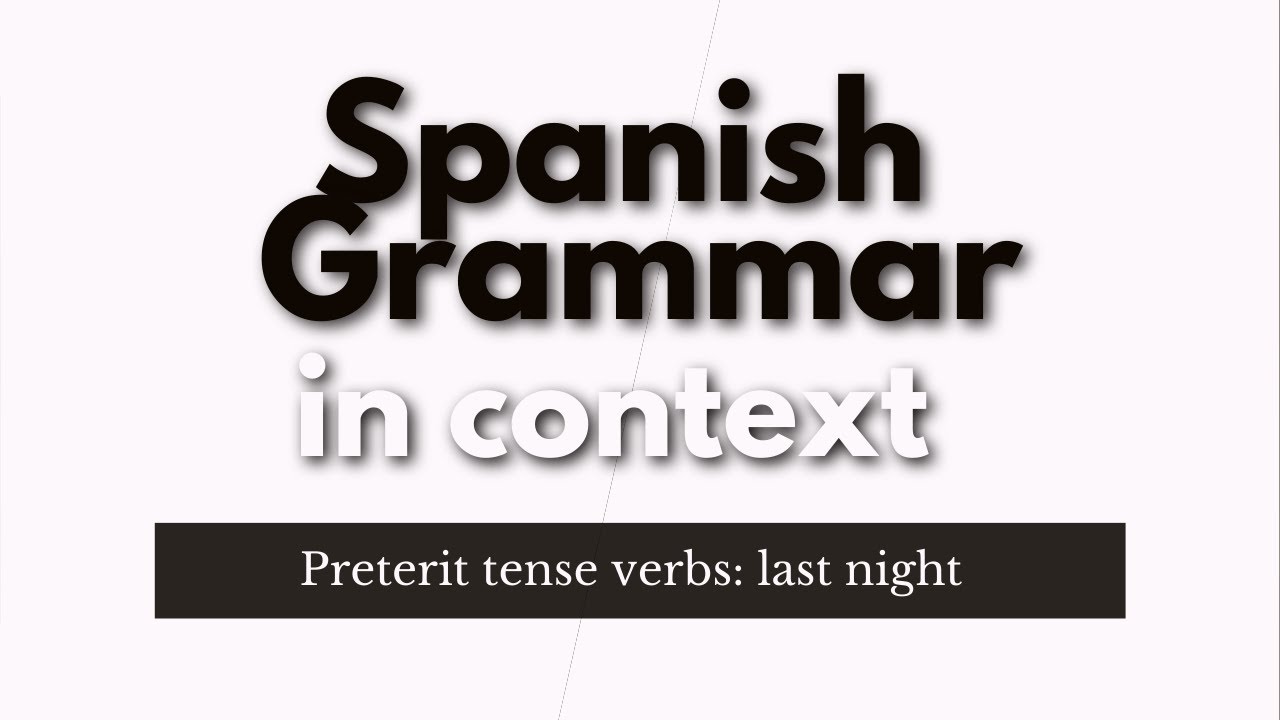Learn Spanish grammar in context. In this video, you’ll hear preterit and preterit tense verbs to talk about night.
Recounting Last Night: A Lesson in Spanish Preterite Tense
In this episode, I offer a lesson on using the Spanish preterite tense, a past tense form used to describe actions that have been completed. The creator narrates events from the previous night, providing a practical context for learners to understand and practice the preterite tense. This episode is particularly useful for learners aiming to grasp the nuances of narrating past events in Spanish.
Key Points for Spanish Learners
- Preterite Tense Usage: Focus on how the preterite tense is used to describe completed activities from the previous night.
- Vocabulary for Daily Activities: The episode introduces vocabulary related to common evening activities, such as shopping and spending time on social media.
- Conversational Context: Understand how to structure sentences in the past tense to describe personal experiences.
Learning Approach for Spanish Students
- Identify Preterite Verbs: Listen carefully to the verbs used and note their preterite forms.
- Contextual Understanding: Pay attention to the context in which the preterite tense is used, particularly in describing completed actions.
- Practice Narration: Use the episode as a model to narrate your own past activities in Spanish using the preterite tense.
“Narrating my last night’s activities in the preterite tense helps learners understand how to effectively use this past tense form in everyday Spanish conversation.”
Suggested Resources
- Spanish Verb Conjugation Charts: For reference on preterite tense forms.
- Narrative Practice Exercises: Focused on using the preterite tense to describe past events.
- Vocabulary Lists: Related to everyday activities and social interactions.
Personal Tip for Learners
As someone passionate about language learning, I recommend practicing the preterite tense by narrating your daily activities. Recounting your previous day or events in Spanish using the preterite tense can significantly enhance your understanding and fluency.
FAQ for Understanding the Video
- Why is the preterite tense important in Spanish?
It’s essential for accurately describing completed actions in the past. Can beginners start using the preterite tense?
Yes, beginners can learn basic forms of the preterite tense to start narrating past events.How can I improve my preterite tense usage?
Regular practice through narration and conjugation exercises can enhance proficiency.What kind of activities are best for practicing the preterite tense?
Narrating past daily activities or specific events is an effective way to practice.Is it challenging to conjugate verbs in the preterite tense?
It can be initially challenging, but with practice, it becomes more intuitive.
Want to master Spanish? Do it in the Lab.
https://real-life-language.teachable.com/p/speak-spanish-like-a-native
Do you teach Spanish? Save yourself a ton of time and money with my creations over decades of summers.
https://real-life-language.teachable.com/p/immersive-beginning-spanish-lessons
If you teach languages, you probably love languages, too. However, our students don’t always love it so much. With all of the hard parts, who can blame them? In this free guide, I share 25 activities that can be used to teach any language and can be adapted to any level. Get yours here https://real-life-language.ck.page/200491762e
Here’s a whole playlist of conversations for beginners: https://www.youtube.com/playlist?list=PL0Lh3RG706EXXYP9OGk8Wnns7955Nii39
